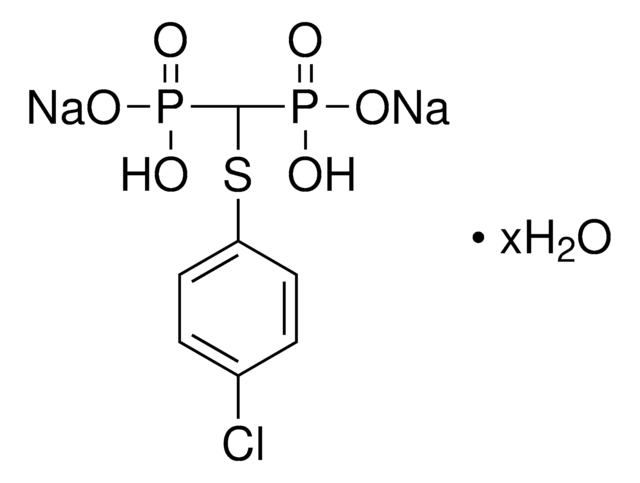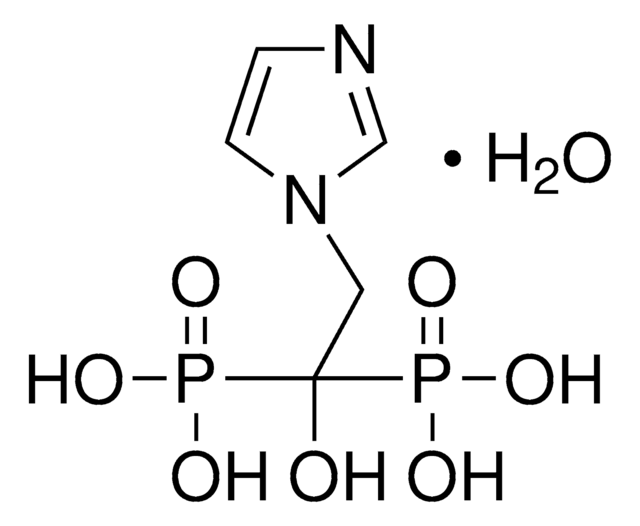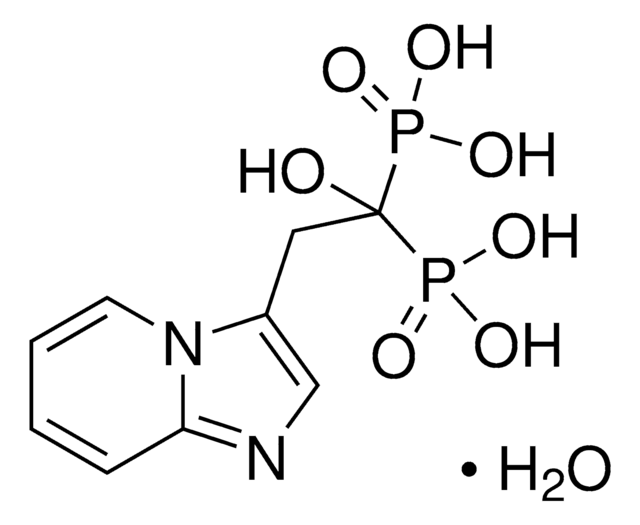I5784
Ibandronate sodium salt
≥97% (NMR), solid
Sinônimo(s):
(1-Hydroxy-3-(methylpentylamino)propylidene)bisphosphonic acid sodium, Bondronat
About This Item
Produtos recomendados
Ensaio
≥97% (NMR)
forma
solid
condição de armazenamento
protect from light
cor
white
solubilidade
H2O: >10 mg/mL
originador
Roche
temperatura de armazenamento
2-8°C
cadeia de caracteres SMILES
[Na+].CCCCCN(C)CCC(O)(P(O)(O)=O)P(O)([O-])=O
InChI
1S/C9H23NO7P2.Na/c1-3-4-5-7-10(2)8-6-9(11,18(12,13)14)19(15,16)17;/h11H,3-8H2,1-2H3,(H2,12,13,14)(H2,15,16,17);/q;+1/p-1
chave InChI
LXLBEOAZMZAZND-UHFFFAOYSA-M
Informações sobre genes
human ... FDPS(2224)
Aplicação
Ações bioquímicas/fisiológicas
Características e benefícios
Código de classe de armazenamento
11 - Combustible Solids
Classe de risco de água (WGK)
WGK 3
Ponto de fulgor (°F)
Not applicable
Ponto de fulgor (°C)
Not applicable
Certificados de análise (COA)
Busque Certificados de análise (COA) digitando o Número do Lote do produto. Os números de lote e remessa podem ser encontrados no rótulo de um produto após a palavra “Lot” ou “Batch”.
Já possui este produto?
Encontre a documentação dos produtos que você adquiriu recentemente na biblioteca de documentos.
Conteúdo relacionado
Discover Bioactive Small Molecules for Lipid Signaling Research
Nossa equipe de cientistas tem experiência em todas as áreas de pesquisa, incluindo Life Sciences, ciência de materiais, síntese química, cromatografia, química analítica e muitas outras.
Entre em contato com a assistência técnica







